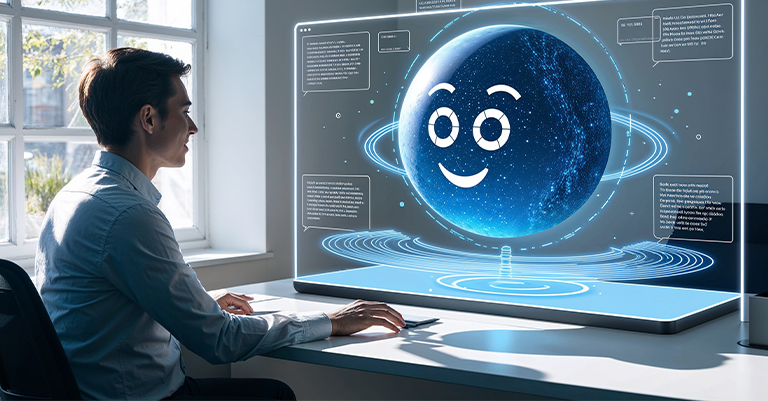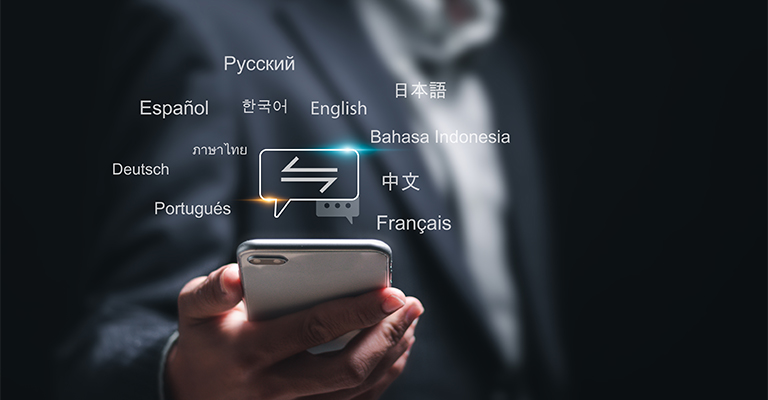Unlock Business Efficiency with AI Chatbots
What are AI Chatbots?
AI chatbots are smart computer programs that use natural language processing (NLP) to talk to people like humans. NLP helps chatbots understand what we say and respond in a way that makes sense. These chatbots help businesses save time and get more done by handling conversations just like a real person would.
You’ve probably seen chatbots on websites answering questions or on apps helping with orders. Unlike humans, chatbots can work 24/7 without getting tired. They’re great at tasks like answering common questions, booking appointments, and sending reminders. By taking care of these smaller jobs, chatbots let your employees focus on more important tasks that need their attention.
In this post, we’ll show you how AI chatbots and natural language processing can make your business more efficient, step by step.
How Do AI Chatbots Work?
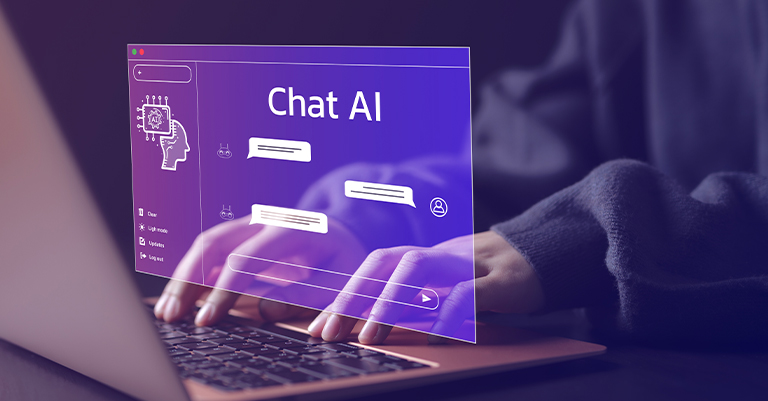
Chatbots use artificial intelligence (AI) to understand what people say and respond in a helpful way. They “learn” by looking at patterns in the words people use.
Here’s how they work:
Learn & Understand
Chatbots first listen to what you say or read what you type. For example, if you type, “What time do you close?” the chatbot will focus on the important words, like “time” and “close.” This helps it understand that you’re asking about the store’s hours. It’s like a super listener that picks out what really matters in your question.
Think Fast
Once the chatbot knows what you mean, it thinks about the best answer. Chatbots are trained using lots of examples, so they can figure out the right response quickly. For instance, if you ask about store hours, the chatbot will “remember” that it should look up the hours and share them with you. It’s like a brain that works super fast to match your question with the right answer.
Respond
After thinking, the chatbot replies instantly. It sends back a clear and helpful message, like “Our store is open from 9 a.m. to 8 p.m.” The chatbot doesn’t need breaks, so it’s always ready to reply. Whether you’re chatting on a website or talking to a voice assistant like Alexa, the chatbot is there to help right away.
Chatbots make conversations simple, whether you’re typing in a chatbox or speaking out loud. They’re like digital helpers that always pay attention, think fast, and give you the answers you need!
Benefits of AI Chatbots for Businesses
AI chatbots can transform how your business operates. Here’s how:
1. Save Time
Chatbots are like super-fast helpers. They can answer common questions right away without anyone having to wait. For example, if someone asks, “What sizes are available for this shirt?” or “How long does shipping take?” the chatbot can reply instantly. This saves your team from spending hours answering the same questions over and over. Employees can then focus on bigger and more important tasks while the chatbot handles the small stuff.
Example: A clothing store chatbot can tell customers about sizes, delivery times, and return policies without a human stepping in.
2. Work 24/7
People need rest, but chatbots don’t! They work all day and night, even on weekends and holidays. This means your customers can get help anytime they want. For example, if a customer wants to order a pizza at midnight or check a menu at sunrise, the chatbot is always ready to assist. It’s like having a friendly helper who never takes a break.
Example: A restaurant chatbot can take orders at midnight or answer questions about the menu at 6 a.m.
3. Improve Customer Experience
Customers love getting help fast and without any hassle. Chatbots make this possible by giving answers in seconds. Imagine asking your bank chatbot, “What’s my account balance?” and getting an answer right away—no waiting on hold or searching through apps. This kind of quick and accurate help makes customers happy and more likely to come back to your business in the future.
Example: A bank chatbot can show account balances or explain fees in seconds.
4. Reduce Errors
People can make mistakes when they’re tired or busy. Chatbots don’t get tired, so they always give the right answers. For example, if you ask a travel chatbot about ticket prices, it will give the correct answer every time. This helps your business stay reliable and makes customers trust you more.
Example: A travel chatbot can list ticket prices correctly, avoiding confusion for customers.
5. Save Money
Hiring people for every small job can cost a lot of money. Chatbots are a cheaper way to handle simple tasks like answering questions or taking orders. For example, when it’s busy, a chatbot can help instead of needing more workers. This saves money and still keeps customers happy.
Types of Tasks AI Chatbots Can Handle

Chatbots are like digital helpers. They can manage many tasks, such as:
1. Answering Common Questions
Chatbots can handle FAQs like:
- What’s your store’s return policy?
- How do I track my order?
2. Taking Orders
Customers can place orders directly through chatbots. This is fast and convenient.
3. Booking Appointments
A chatbot can schedule appointments or send reminders for upcoming meetings.
4. Providing Product Recommendations
Some chatbots help customers find products that fit their needs or preferences.
Example: A beauty brand chatbot might suggest skincare products based on your skin type.
5. Sending Updates and Notifications
Chatbots can alert customers about sales, order updates, or new products.
Industries That Use AI Chatbots
Almost every industry can use AI chatbots to become more efficient. Here are a few examples:
1. Retail and E-commerce
In stores and online shopping, chatbots are like personal shopping helpers. They help customers find what they’re looking for by answering questions like, “Do you have this shirt in red?” or “Where can I find shoes on sale?” They also track orders, so customers can ask, “When will my package arrive?” Plus, they explain return policies or shipping details, making shopping easier and faster for everyone.
2. Healthcare
In healthcare, chatbots work like virtual assistants for patients. They can schedule doctor’s appointments by checking the doctor’s calendar and finding an available time. Chatbots also send reminders so patients don’t forget their appointments. If a patient has a simple question like, “How do I take this medicine?” the chatbot can give them the right information right away. This helps doctors and nurses focus on treating patients.
3. Hospitality
In hotels, airlines, and travel companies, chatbots make planning trips a breeze. They help customers book hotel rooms or flights by asking a few quick questions. If plans change, the chatbot can cancel or reschedule bookings in seconds. If someone has a question, like “What time is check-in?” or “Can I bring extra luggage?” the chatbot provides answers right away, helping customers feel supported.
4. Banking and Finance
Chatbots in banks work like digital assistants for your money. They answer questions like, “What’s my account balance?” or “How do I pay my credit card bill?” They also help customers understand payment options or fees. By providing quick, clear answers, chatbots make banking faster and easier, so customers don’t have to wait in long lines or on the phone.
5. Education
In schools and colleges, chatbots help students with important jobs. They answer questions like, “What papers do I need to apply?” Chatbots also share information about classes, like when they happen or what they’re about. They even send reminders about homework or school events to help students stay on track.
Chatbots are like digital helpers for different industries, making tasks faster and easier for customers, patients, and students alike!
How to Start Using AI Chatbots
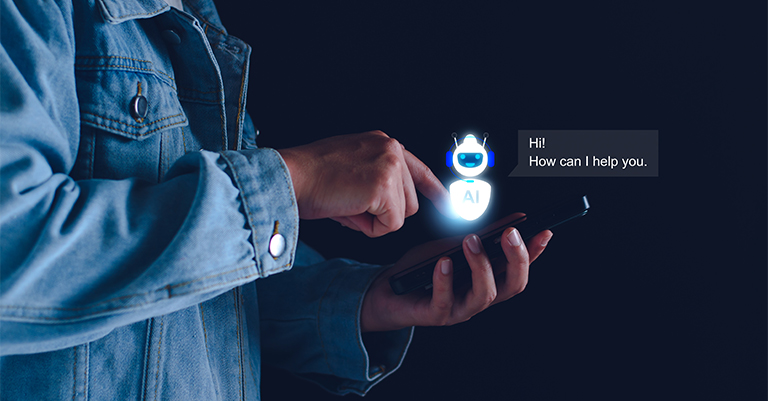
It’s easy to add a chatbot to your business. Follow these steps:
Step 1: Decide What You Need
Think about your goals. Do you need the chatbot to answer questions, take orders, or do something else?
Step 2: Choose the Right Chatbot Platform
There are many platforms to build chatbots, such as:
- ChatGPT
- Tidio
- ManyChat
Step 3: Train Your Chatbot
Feed your chatbot with the information it needs. This could include FAQs, product details, or service instructions.
Step 4: Test It Out
Try your chatbot before launching it. Fix any errors to ensure it works perfectly.
Step 5: Launch and Monitor
Let your chatbot go live. Watch how it performs and update it regularly.
Tips for Making Chatbots Even Better
To get the most out of your chatbot, follow these tips:
1. Keep It Simple
Make sure your chatbot uses clear and easy-to-understand language.
2. Add a Human Backup
If the chatbot gets stuck, it should direct the customer to a human for help.
3. Personalize Responses
Use the customer’s name or remember their preferences to create a better experience.
4. Collect Feedback
Ask users if they found the chatbot helpful. Use their feedback to improve it.
Challenges to Consider
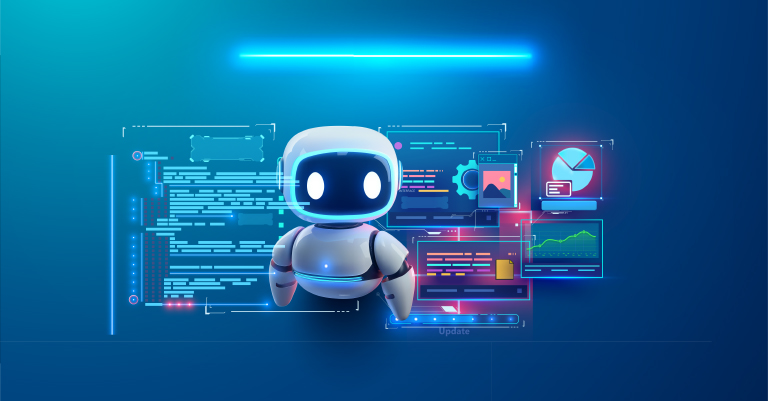
While chatbots are great, there are some challenges:
1. Initial Setup Costs
Making a chatbot can be expensive at first. You might have to spend money to design it, teach it what to say, and make sure it works well. It’s like buying a new computer or a big machine for your business—you pay a lot upfront, but it helps you save money and time later. Once the chatbot is set up, it can do many tasks for less money than hiring extra workers, so it’s a smart investment in the long run.
2. Limited Understanding
Chatbots are very smart, but they’re not perfect. They can handle common questions like, “What’s your return policy?” but might get confused by unusual or tricky ones. For example, if a customer asks a very specific question like, “Can you recommend a gift for my uncle who likes both fishing and gardening?” the chatbot might not know how to answer. That’s why it’s important to have human workers available to step in and help when the chatbot doesn’t understand.
3. Updates Needed
Chatbots need regular updates to keep working well. Over time, new questions might come up, or the business might change its services, and the chatbot has to learn those new things. For example, if a store starts offering same-day delivery, the chatbot needs to be updated to tell customers about it. Without updates, the chatbot could give wrong or outdated answers, which could confuse or upset customers. Keeping it updated ensures it stays helpful and accurate.
The Future of AI Chatbots
AI chatbots are improving quickly, and their future is exciting! They are becoming smarter every day, and soon they could do things that feel even more human-like and helpful.
Understand Emotions Better
In the future, chatbots might understand how people feel when they talk or type. For example, if someone sounds upset or frustrated, the chatbot could respond in a kinder, more caring way. This could make conversations feel more natural, like talking to a real person who understands how you feel. Imagine a chatbot saying, “I’m sorry you’re having trouble. Let’s fix that together,” when it notices you’re stressed.
Offer More Personalized Experiences
Chatbots are already pretty good at remembering things, but future chatbots could get even better at personalizing their help. They might remember your favorite products, your usual questions, or even how you like to be greeted. For example, a chatbot for a coffee shop might remember your usual order and say, “Hi! Ready for your usual caramel latte today?” This would make using chatbots feel special and personal.
Seamless Integration with Other Technologies
Chatbots in the future will likely work better with other technologies. They could connect with smart devices, apps, or even virtual reality tools. For example, a chatbot might help you control your smart home, like turning off lights or setting the thermostat. It might also work with advanced tools in businesses, such as connecting directly with inventory systems to let customers know what’s in stock in real time.
Businesses that start using chatbots now will be ready to grow with these exciting changes. By adopting chatbots early, companies can stay ahead of competitors, provide better service, and adapt easily to the amazing improvements that are just around the corner!
Closing Thoughts on AI Chatbots
AI chatbots are super helpful tools that save time, cut costs, and improve customer service. They work all day and night, answering questions, booking appointments, or taking orders without ever getting tired. This gives your team more time to focus on important tasks, helping your business run better.
Customers love getting fast, clear answers, and chatbots make that happen. They reply instantly, helping people get what they need without waiting. Happy customers are more likely to come back, which helps your business grow.
Starting with chatbots is easy. You can begin by using one to answer simple questions on your website. Try it out, make improvements, and add more features as you go. Even small steps can make a big difference in saving time and keeping customers happy.
Chatbots will keep getting smarter and more helpful in the future. If you start using them now, you’ll be ready for even better tools later. Start small, give it a try, and watch how chatbots make your business faster and better for everyone!


